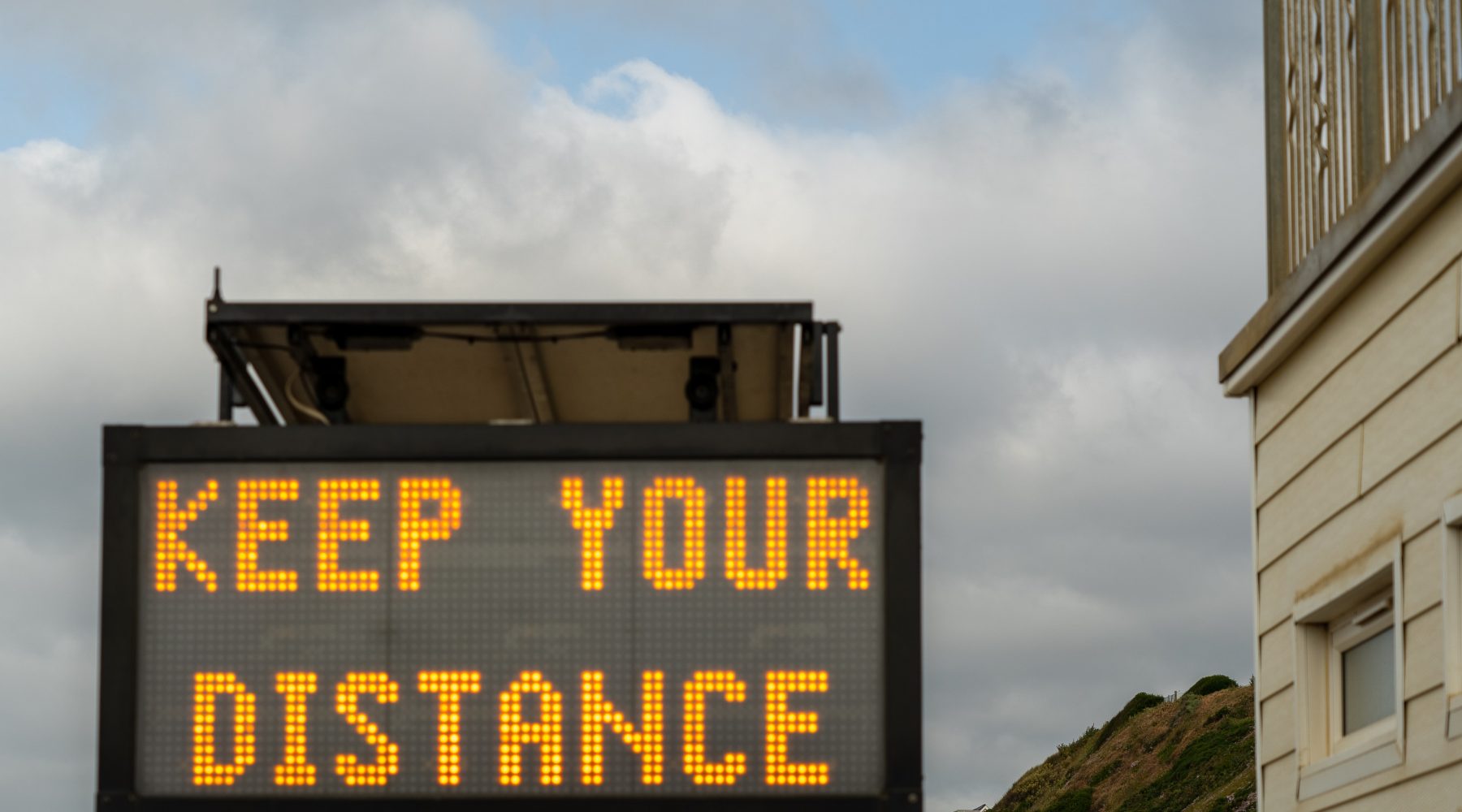Social distancing 101: Safe Work issues guidance for ECEC about implementation

Following the announcement earlier in the week by the AHPPC that social distancing and venue density guidelines are “not appropriate or practical” in early childhood education and care (ECEC) sites, Safe Work Australia has issued some guidance, specific to early childhood, which may support those in the sector to have a clearer understanding of how measures for adults in the service may be implemented.
Why adults but not children?
Physical distancing is necessary, Safe Work said, because the most likely way of catching the virus is by breathing in micro-droplets from another person sneezing, coughing, or exhaling.
The AHPPC has based their advice, that social distancing measures should not apply to young children, on the “very limited evidence” of transmission between children, with population screening overseas showing very low incidence of positive cases in school-aged children.
“In Australia, less than 1 per cent (0.8 per cent) of confirmed cases have been in children under 5 years of age, as at 15 May 2020,” the AHPPC statement read.
For adults, current health advice is that everyone, including people at workplaces, must implement physical distancing measures, wherever possible, of 4 square metres of space per person and maintaining a physical distance of at least 1.5 metres from others. These measures reduce the likelihood of exposure to micro-droplets of others.
Classrooms no, staff rooms yes
Safe Work Australia has communicated that workplaces, so far as is reasonably practicable, should ensure all adults have 4 square metres of space each and maintain a physical distance of 1.5 metres between each adult in all areas of the facility.
This includes staff facilities such as kitchens and break rooms and “in play rooms”.
While children do not need to be counted or included in implementing physical distancing measures, Safe Work said, “you may find that separating children into small groups throughout the facility and utilising both indoor and outdoor spaces during the day will make it easier for workers (and other adults) to maintain their distance from one another.”
Pick up and drop off protocols
Safe Work Australia recommends that services review drop off and pick up procedures to determine whether it is possible to reduce the number of workers and parents or guardians gathered at the same time.
This may mean staggering drop off and pick up times, extending opening hours, or allocating certain times to certain groups.
When parents and guardians are entering the facility to pick up or drop off children, there are a number of measures which can be taken to support the health, safety and wellbeing of all those within the service, including:
- Requesting parents and guardians to maintain 1.5 metres between themselves and other adults when at the facility;
- Rearranging the foyer or waiting area where possible to encourage parents or guardians to achieve the maximum space per adult;
- Requesting parents or guardians to minimise time spent in the facility and not to congregate in groups;
- Putting up signs and posters to remind parents or guardians about physical distancing. (Consideration needs to be given to how to communicate with those for whom English is not their first language);
- Requiring parents or guardians who enter the facility to wash their hands with soap and water or with alcohol-based hand sanitiser and again when exiting;
- Whilst it is important for parents or guardians to be able to discuss their child with workers, particularly at the end of the day, extended face-to-face communication should be minimised. Other methods of communication such as communication books, phone messages, emails or other communication apps could be used; and,
- If a non face-to-face option is not possible, ensure face-to-face time is conducted at an appropriate distance and is limited, that is make sure the discussion does not go on for longer than it needs to.
Interacting with children
As interactions between employees are “heavily influenced” by their joint care and supervision of children, Safe Work said, employees are “encouraged to implement measures that maximise the distance between groups of children” to help workers maintain their distance from each other.
Where reasonably practicable, Safe Work suggested the following measures, recognising that these will depend on the developmental, care and educational needs of children:
- Staggering play times;
- Changing frequency, or using larger spaces for group mat times (e.g. outside);
- Organising small group play which may require a redesign of the layout of the room and the placement of children’s activities to encourage small group play. Consider different options to allow people to naturally spread out.
-
- Set up more individual activities throughout the room. For example, rather than having all of your books and blocks on one shelf, set them up in separate areas throughout the room where possible.
- Limit the number of chairs at a table to reduce the number of children that can play together – e.g. two chairs to a table;
- Wherever possible (e.g. weather dependent) and where appropriate staff numbers exist for adequate supervision, consider operating an indoor/outdoor program for a longer period to provide more space for the children and the setup of more activities for children to engage in;
- Spending more time outdoors and the placement of activities across the outdoor space. A greater range of activities may also facilitate workers being more spread out;
- Alter the setup when children are eating, having fewer educators at each table and using more tables to allow space between children. By maximising the space between each child where more than one worker is required at the table to assist children to eat, workers can maintain an appropriate distance from each other;
- If there are limited tables children typically eat at the same time, Safe Work suggested staggered timings of snacks and lunch over a longer period of time, and cleaning thoroughly between sittings; and,
- A review of the spacing of cots and highchairs, keeping them well apart to ensure that workers can maintain an appropriate distance from each other when attending to children.
If changing the physical layout of the workplace, Safe Work said, the new layout must allow for workers and children to enter, exit and move about the workplace both under normal working conditions and in an emergency without risks to their health and safety so far as is reasonably practicable.
Staff spaces
In areas which are for the exclusive use of adults within the service, such as staff room areas, Safe Work said that, wherever possible, each worker should have 4 square metres of space in enclosed areas in accordance with general health advice.
To achieve this, services should calculate the area of the enclosed space (length multiplied by width in metres) and divide by four. This will provide information about the maximum number of adults who should be in the space at any one time.
Where the nature of the work role means this is not possible, other measures should be taken to prevent the spread of COVID-19.
To support in maintaining the 4 square meters of space required, Safe Work recommended that services limit the number of workers in any given area by:
- Requiring office/administration tasks to be completed by workers in their own homes, where possible;
- Displaying signage which indicates the number of people allowed in any enclosed space at any one time;
- Staggering meal breaks and start times;
- Providing separate bathroom facilities for staff and any other users in the service, such as families and children;
- Changing the layout of adult spaces to encourage 1.5 metre distance by spreading out furniture, or creating specific pathways;
- Postponing or cancelling non-essential gatherings, meetings and training sessions, and using non face-to-face methods for essential meetings; and,
- Reducing visitors to essential only, including cancelling incursions.
Safe Work advised that the recommendations given above should be cross referenced with advice from the relevant state or territory health authority for specific restrictions in place under public health directions or orders in any state or territory.
Before implementing any changes, employers are reminded of their obligation to consult with workers and their representatives (e.g. health and safety representatives (HSRs)) on health and safety matters relating to COVID-19, including what control measures may be put in place in their workplace.
While this information was accurate at time of print, services are encouraged to review the Safe Work Australia website for the most recent version.
Popular

Workforce
Quality
Research
When did it start to go wrong?
2025-12-18 08:00:46
by Fiona Alston

Quality
Policy
Provider
Emergency Action Notices issued to three South Australian ECEC services over mobile device management concerns
2025-12-18 06:31:16
by Fiona Alston

Economics
Provider
Quality
Jobs News
Policy
Practice
Workforce
The year in review: 2025's most impactful ECEC news stories and shifts
2025-12-16 07:32:18
by Fiona Alston
















